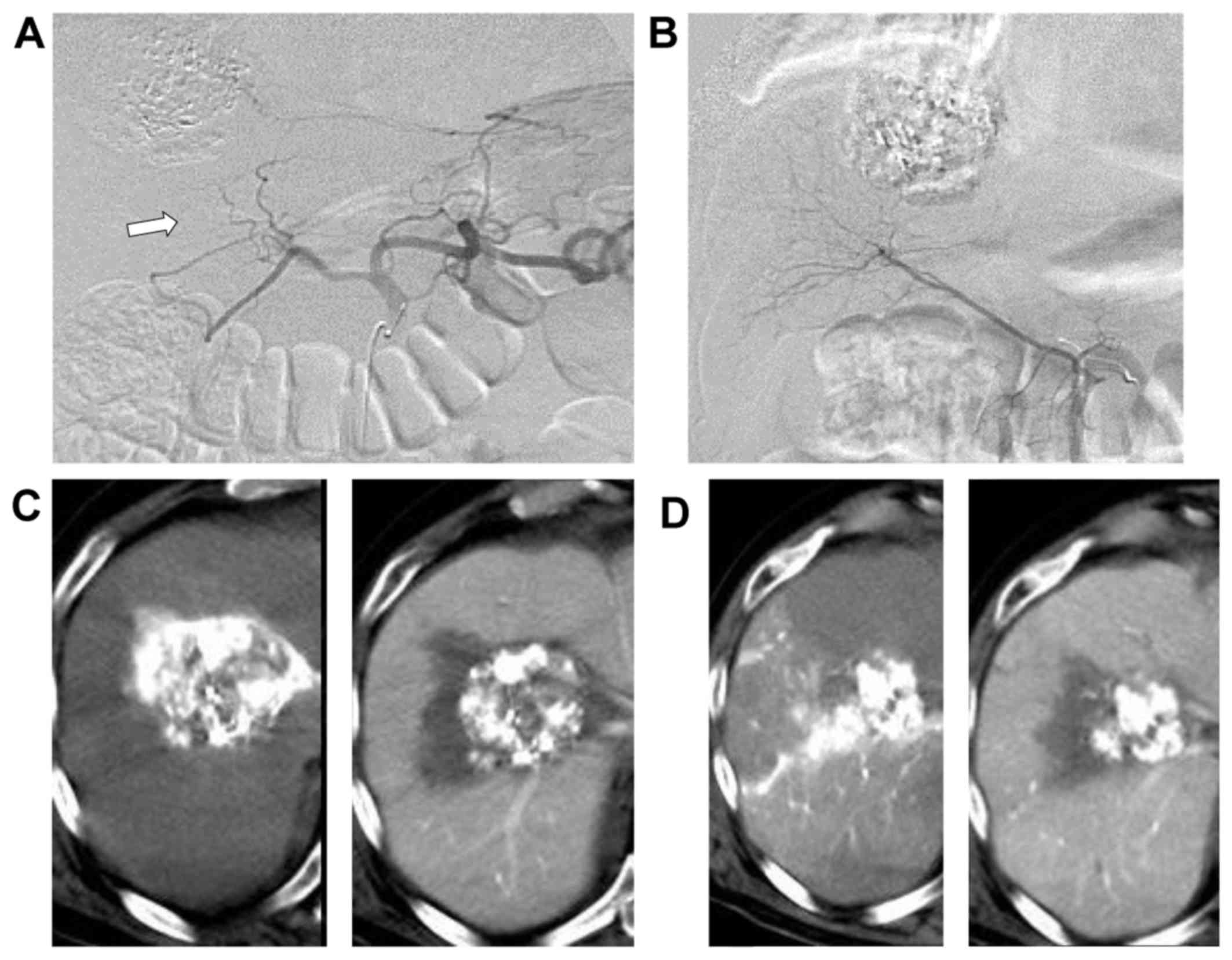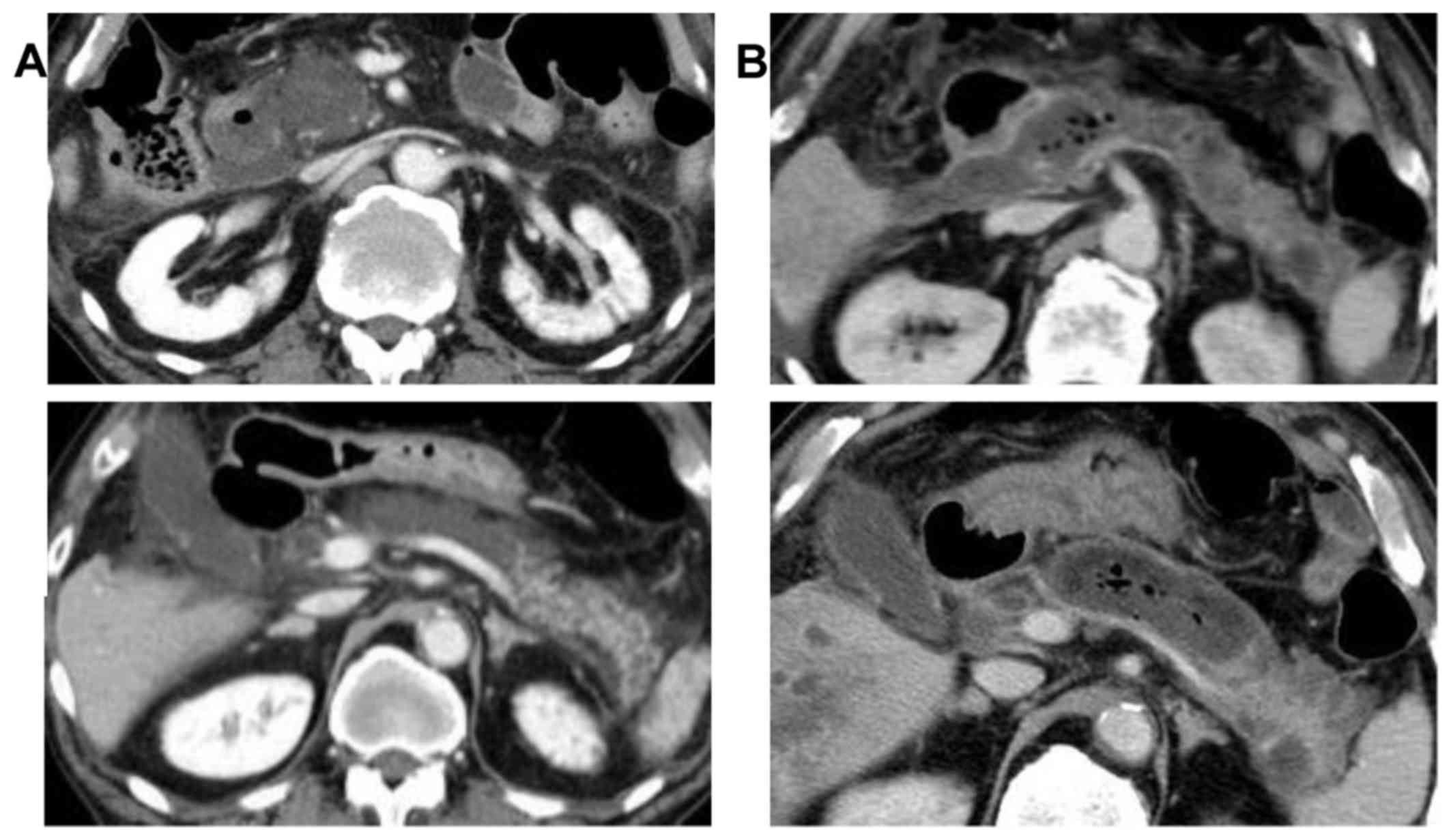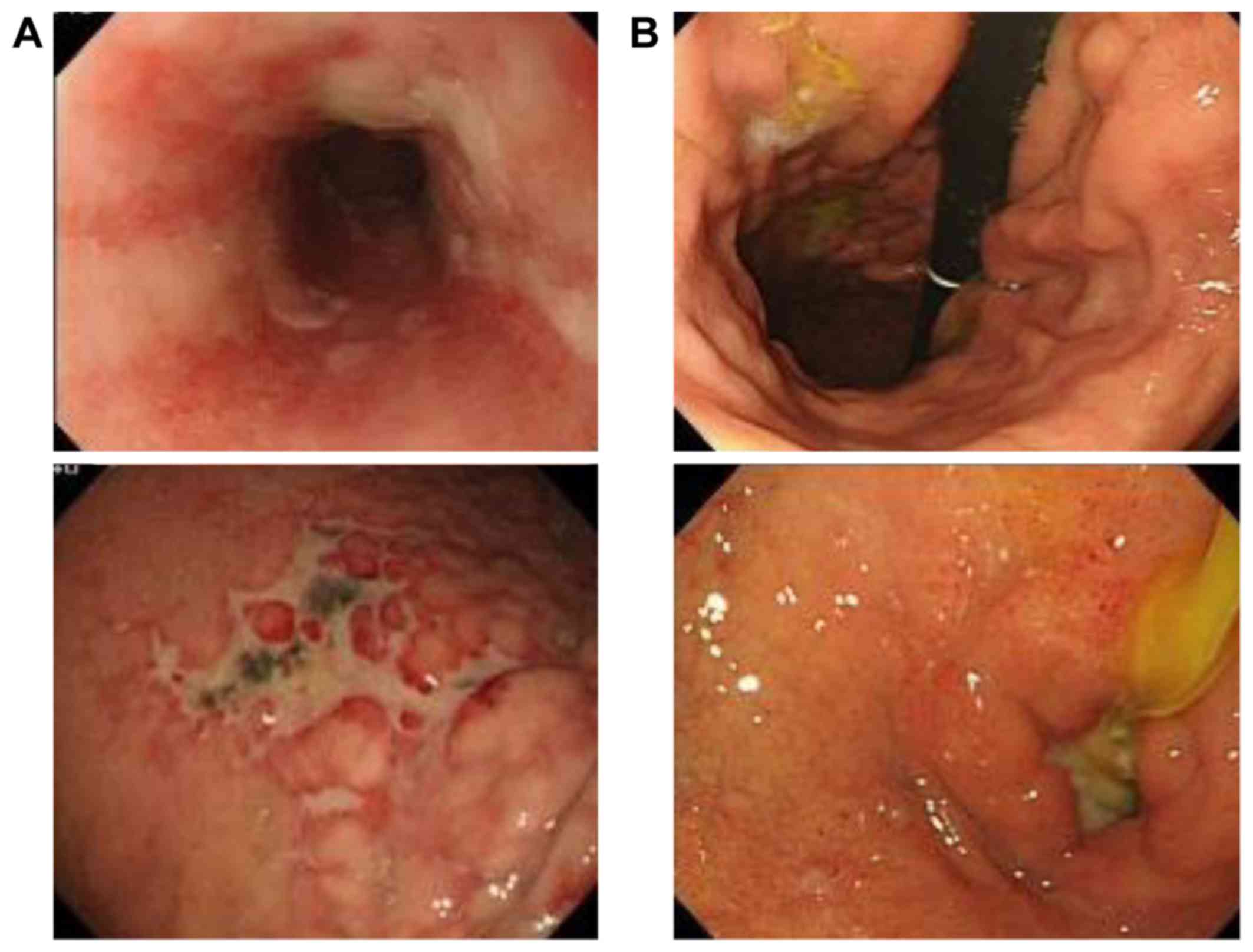Spandidos Publications style
Yamaguchi T, Seki T, Komemushi A, Suwa K, Tsuda R, Inokuchi R, Murata M, Yuki M, Harima Y, Okazaki K, Okazaki K, et al: Acute necrotizing pancreatitis as a fatal complication following DC Bead transcatheter arterial chemoembolization for hepatocellular carcinoma: A case report and review of the literature. Mol Clin Oncol 9: 403-407, 2018.
APA
Yamaguchi, T., Seki, T., Komemushi, A., Suwa, K., Tsuda, R., Inokuchi, R. ... Okazaki, K. (2018). Acute necrotizing pancreatitis as a fatal complication following DC Bead transcatheter arterial chemoembolization for hepatocellular carcinoma: A case report and review of the literature. Molecular and Clinical Oncology, 9, 403-407. https://doi.org/10.3892/mco.2018.1690
MLA
Yamaguchi, T., Seki, T., Komemushi, A., Suwa, K., Tsuda, R., Inokuchi, R., Murata, M., Yuki, M., Harima, Y., Okazaki, K."Acute necrotizing pancreatitis as a fatal complication following DC Bead transcatheter arterial chemoembolization for hepatocellular carcinoma: A case report and review of the literature". Molecular and Clinical Oncology 9.4 (2018): 403-407.
Chicago
Yamaguchi, T., Seki, T., Komemushi, A., Suwa, K., Tsuda, R., Inokuchi, R., Murata, M., Yuki, M., Harima, Y., Okazaki, K."Acute necrotizing pancreatitis as a fatal complication following DC Bead transcatheter arterial chemoembolization for hepatocellular carcinoma: A case report and review of the literature". Molecular and Clinical Oncology 9, no. 4 (2018): 403-407. https://doi.org/10.3892/mco.2018.1690


















